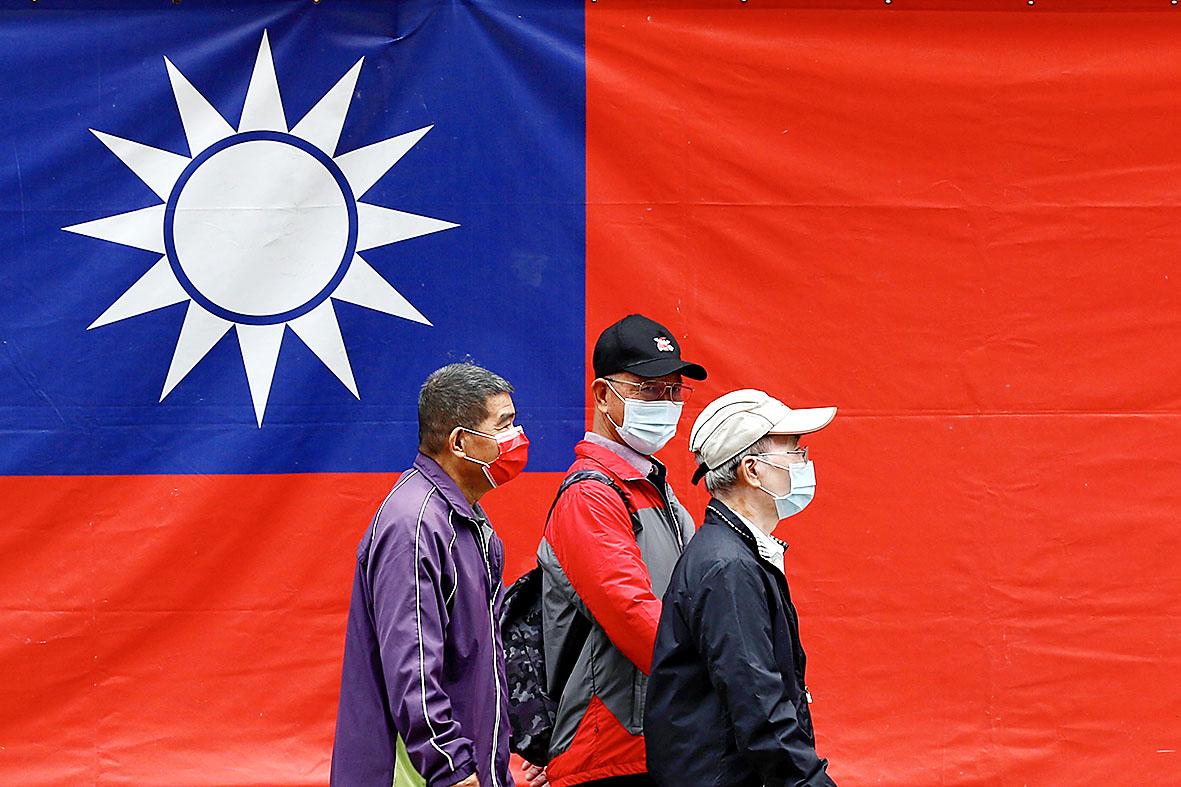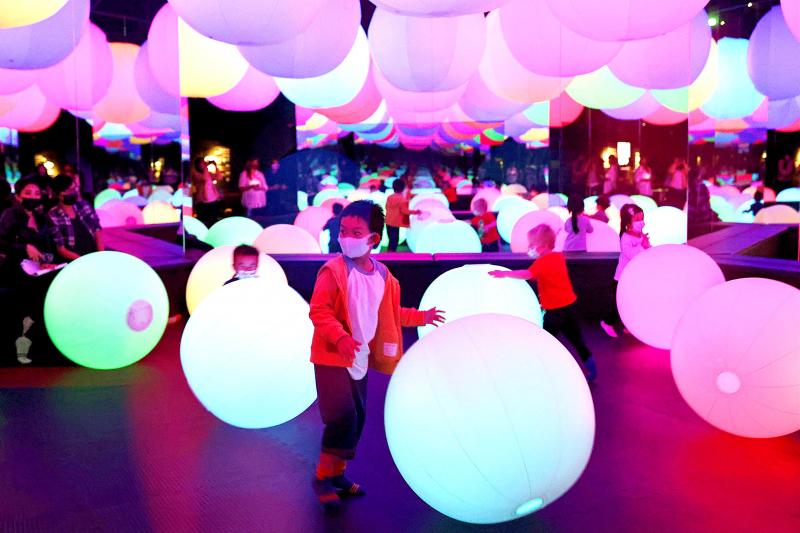The government released its latest population data for the Beautiful Island last week, and the numbers augur ill. Taiwan continues to age at an alarming rate.
For the first time in its history, the working age population between 15 and 64 fell from census to census, declining 169,000 to 16.54 million. The number of people over 65 in Taiwan is now at 3.67 million, nearly 16 percent of the population.
The population is also falling, some of that due to people overseas having their household registrations canceled after being gone for more than two years due to COVID. According to the government, roughly 20,000 more people left Taiwan than entered it in September.

Photo: EPA-EFE
There is no happy trend anywhere in these numbers.
AGING IN TAIWAN
Articles on aging tend to focus on its effects on the health care system, but our growing elderly are going to transform every aspect of society.

Photo: Reuters
Elder care costs go far beyond medical care. They also need specialized infrastructure, transportation services and in-home care. In Taiwan a decade ago, the proportion of children living with elderly parents was higher than in China, South Korea or Japan. Could this subsidize the need for increased social welfare expenditures on the aged?
Among economists it is widely believed that such care declines as social welfare policies substitute for care by children. However, as Lin Ju-ping (林如萍) and Yi Chin-chun (伊慶春) noted in a recent paper, sociologists disagree, finding that irrespective of the welfare system, once factors such as health and partnership status are controlled for, human societies are largely similar in this regard.
Don’t expect the younger generations, already overburdened with longer working hours at low pay, to step up. They can’t.
Indeed, for decades in the relationship between the aged and their young the relationship has often run the other way: the young with few siblings tap the old for money.
“During the past decade, the percentage of ‘dependent’ intergenerational interactions has been on the rise,” Lin and Yi observe.
In addition to the medical and social costs, the growing population of the elderly will affect defense arrangements. A 2018 American Enterprise Institute (AEI) report, “Taiwan’s demographic crunch and its military implications” noted several issues facing the nation.
The AEI observed that it will be difficult for the military to find enough warm bodies to fill the ranks, especially since manufacturing and agriculture will need people to maintain production.
More deeply, military budgets will face increasing pressure as the growing senior population demands more services, AEI pointed out. This problem will become more acute as Taiwan has to substitute expensive high-tech systems such as autonomous drones and robots for the declining supply of cheap warm bodies.
Consider also: in last year’s presidential election Chinese Nationalist Party (KMT) candidate Han Kuo-yu’s (韓國瑜) support was strongest in the 50-59 age bracket, an age cohort that will soon be hitting retirement. That will be the last cohort of the Taiwan Miracle, weaned on KMT propaganda and browbeaten in the concentration camps that the KMT set up for Taiwan’s young males, which were euphemistically known as military bases.
It will likely live another 20 years beyond that, distorting local politics and beggaring local governments with its need for care services and pension payouts. It will be two more decades before people who came of age under democracy begin retiring.
What kind of policies will the Han voters support? Obviously, though not everyone in it voted for Han, that cohort will likely be more conservative than the population at large.
Thus, in policies for climate, economic inequality, immigration and labor, Taiwan may well present the grim picture of a society growing more conservative with time even as the changes it requires to survive grow more radical.
The invariable answer to this expanding list of problems, as many have noted over the years (including this writer), is immigration. That might work, if immigrants had different birth rates than people born here, but a quick glance at the fertility patterns of “foreign brides” shows that they mirror those of women born here.
Suppose we gave every migrant worker here citizenship in a blanket law. Would they all pump out four kids? Not a chance: many of them already have kids (which is why they are working overseas) and will not have many more. We’d have a nifty bump in the labor force, followed in 20 years by an awkward bump in the aged population, still without the extra children to care for them.
STRUCTURAL PROBLEMS
The real problem is structural: except for medical care and personal safety, Taiwan is a terrible place to raise kids. The schools are brutal. After junior high school begins, students have little time to grow into themselves and find out who they are. Because students are expected to study (and only study) organized activities for teenagers hardly exist. Bullying is common.
But that is only the beginning. Houses are cramped. Roads are crowded. Parks are overrun with people on the weekend. Green space is at a premium in urban areas.
Exhausted from long working hours, parents spend less time with kids. Parental leave is largely a legal fiction, especially for fathers. Yet work pays so poorly that children are a huge financial burden.
The list goes on and on.
The government can move on immigration, but that won’t address the real issues. Indeed, at some point, because of pressure from the foreign community, and because boosting immigration can give the appearance of addressing the problem without the reality of hard choices, I expect the government to loosen its border controls.
But until our government and our society decide that children are more than biological vehicles intended to maintain the family name and status, fill places in industry and care for the next generation, Taiwan will continue to face population decline.
Not with a bang, but with the whine of pampered elderly will we fade out.
Notes from Central Taiwan is a column written by long-term resident Michael Turton, who provides incisive commentary informed by three decades of living in and writing about his adoptive country. The views expressed here are his own.

Most heroes are remembered for the battles they fought. Taiwan’s Black Bat Squadron is remembered for flying into Chinese airspace 838 times between 1953 and 1967, and for the 148 men whose sacrifice bought the intelligence that kept Taiwan secure. Two-thirds of the squadron died carrying out missions most people wouldn’t learn about for another 40 years. The squadron lost 15 aircraft and 148 crew members over those 14 years, making it the deadliest unit in Taiwan’s military history by casualty rate. They flew at night, often at low altitudes, straight into some of the most heavily defended airspace in Asia.

Many people in Taiwan first learned about universal basic income (UBI) — the idea that the government should provide regular, no-strings-attached payments to each citizen — in 2019. While seeking the Democratic nomination for the 2020 US presidential election, Andrew Yang, a politician of Taiwanese descent, said that, if elected, he’d institute a UBI of US$1,000 per month to “get the economic boot off of people’s throats, allowing them to lift their heads up, breathe, and get excited for the future.” His campaign petered out, but the concept of UBI hasn’t gone away. Throughout the industrialized world, there are fears that

Taiwan’s democracy is at risk. Be very alarmed. This is not a drill. The current constitutional crisis progressed slowly, then suddenly. Political tensions, partisan hostility and emotions are all running high right when cool heads and calm negotiation are most needed. Oxford defines brinkmanship as: “The art or practice of pursuing a dangerous policy to the limits of safety before stopping, especially in politics.” It says the term comes from a quote from a 1956 Cold War interview with then-American Secretary of State John Foster Dulles, when he said: ‘The ability to get to the verge without getting into the war is

Like much in the world today, theater has experienced major disruptions over the six years since COVID-19. The pandemic, the war in Ukraine and social media have created a new normal of geopolitical and information uncertainty, and the performing arts are not immune to these effects. “Ten years ago people wanted to come to the theater to engage with important issues, but now the Internet allows them to engage with those issues powerfully and immediately,” said Faith Tan, programming director of the Esplanade in Singapore, speaking last week in Japan. “One reaction to unpredictability has been a renewed emphasis on